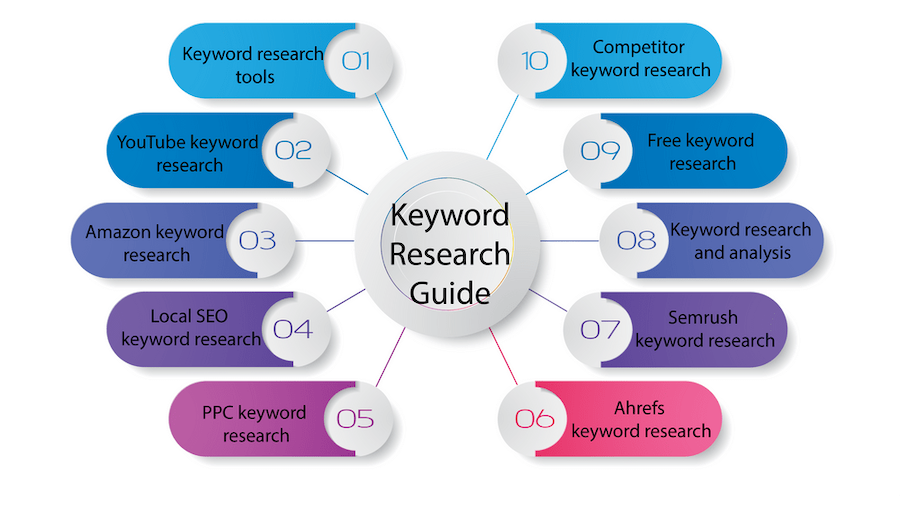In today’s competitive digital landscape, using a keyword cluster tool is no longer optional—it’s essential for building a strong SEO strategy. By grouping keywords into meaningful clusters, you can align your content with search intent, create targeted pages, and boost your search engine rankings.
Whether you’re using a free keyword grouping tool or an advanced clustering algorithm, keyword clustering helps you move beyond isolated keywords to strategically group keywords based on semantic relevance and user intent.
This method ensures your content speaks directly to what your audience is searching for, increases organic traffic, and strengthens your overall seo content strategy.
With the right keyword grouping tool, you can organize your keyword list, identify related keywords, and even discover new long tail keywords.
These tools help uncover topic clusters, map closely related and semantically related keywords, and reduce keyword cannibalization.
Combined with insights from Google Search Console, search volume data, and search queries, a powerful keyword clustering process can transform how you plan and execute content.
Whether you're building multiple pages around the same search intent, identifying high search volume keywords, or generating in depth content for your target audience, keyword clustering gives your SEO efforts the structure they need to succeed.
What Is a Keyword Cluster Tool and Why Is It Important for SEO?

A keyword cluster tool is an SEO software or platform that groups similar keywords based on their search intent, semantic relevance, or SERP similarity.
Instead of targeting individual keywords in isolation, it allows you to create topic clusters by organizing various keywords into tightly related groups. This helps you produce more comprehensive and relevant content for your target audience.
Using a keyword cluster tool is crucial for building topical authority—a key factor in how search engines assess and rank content. By addressing multiple related search queries in one organized cluster, you demonstrate expertise and increase your chances of appearing in more search engine results.
While there are many paid tools offering advanced clustering features, there are also free keyword clustering tools that provide solid functionality for beginners and small teams.
These tools often outperform other tools when it comes to simplicity and ease of use, making them ideal for efficient content strategy development.
How Do You Group Related Keywords for Better Search Engine Visibility?

Grouping related keywords is a core step in any successful SEO strategy. With the help of a keyword cluster tool or keyword grouping tool, you can group keywords that share the same search intent, improving your chances of ranking higher across multiple search engine results pages.
A powerful clustering tool analyzes your keyword list and organizes it into keyword clusters—sets of closely aligned terms that target the same user intent.
Whether you're using a free keyword grouping tool or a more advanced paid tool, clustering enables you to cover topic clusters and build topical authority around your primary keyword.
Using natural language processing and clustering algorithms, these tools detect semantically related keywords, identify similar keywords, and even uncover long tail keywords with high search volume—all critical to attracting more organic traffic.
You can also rely on free keyword clustering tools that pull keyword data from Google Search Console and match terms to the same search queries in actual search engines.
Grouping allows you to:
- Create keyword clusters aligned with semantic relevance and same search intent
- Avoid keyword cannibalization across multiple pages
- Assign keywords more efficiently to a pillar page and supporting cluster pages
- Plan content that targets a broader range of search engine results
Incorporating grouped keywords into your seo content strategy helps you create in depth content tailored to your target audience. It also enhances your content planning, making sure each piece of content supports a larger structure built around topical authority.
With the right tools—be it a free tool, a keyword grouping platform, or other tools—you can transform your scattered keyword ideas into a cohesive, strategic map that boosts your visibility and drives more qualified traffic.
Why Is Understanding Search Intent Crucial When Creating Keyword Clusters?

1. Matches Content to User Needs
Understanding search intent helps you create keyword clusters that directly address what users are actually looking for—whether it’s information, a product, or a solution. This improves your overall seo content strategy.
2. Improves Keyword Grouping Accuracy
A good keyword grouping tool or free keyword grouping tool can identify related keywords, but only by aligning them with user intent can you group keywords effectively for optimal SEO impact.
3. Prevents Keyword Cannibalization
When you align semantically related keywords with their intended purpose, you avoid targeting the same search intent on multiple pages, which can hurt your search engine rankings.
4. Enables Smarter Content Planning
Knowing the search intent behind keywords allows you to structure your keyword clusters into topic clusters, assign them to a pillar page, and create logical cluster pages around them.
5. Boosts Search Engine Visibility
Search engines favor content that meets user expectations. Keyword clusters built with intent in mind increase semantic relevance, which helps you rank better in search engine results for long tail keywords and high search volume keywords.
6. Maximizes Tool Effectiveness
Even the best clustering tools or free keyword clustering tool depend on accurate intent classification. Many tools use clustering algorithms, search volume data, and serp similarity to detect closely related terms with the same user intent.
7. Drives More Organic Traffic
When your clusters are intent-aligned, your content resonates better with your target audience, leading to higher engagement, better rankings, and ultimately more organic traffic.
8. Supports Scalable Content Strategy
Intent-based clustering simplifies content planning across various keywords. You can organize your keyword list, track keyword ideas, and systematically build topical authority around each primary keyword.
How Does the Primary Keyword Influence Your Overall SEO Strategy?

1.Guides Keyword Research and Discovery: Your primary keyword acts as the anchor for your entire keyword research process. It helps uncover relevant keywords, secondary keywords, and drives deeper keyword discovery to build a more robust content plan.
2.Shapes Content Focus and Intent: A well-chosen primary keyword defines the search intent behind your content. It ensures that your message aligns with what users expect to find in the Google search results, improving click-through rates and engagement.
3.Forms the Basis of Cluster Keywords: The primary keyword helps you cluster keywords into logical topic groups. These tool groups are often used to create pillar content supported by cluster pages, each targeting a variation or subtopic of the main term.
4.Improves Relevance and SEO Targeting: Building content around your primary keyword increases semantic relevance and signals to search engines that your page is the best match for that query. This helps your content appear for more keywords in organic searches.
5.Supports Strategic Use of All the Keywords: Once the primary keyword is defined, it becomes easier to map and organize the keywords—including long-tail and niche terms—into predefined groups, enabling efficient content production and targeting.
6.Helps Navigate Keyword Difficulty and Prioritization: Assessing the keyword difficulty of your primary keyword helps determine whether to target it directly or use it to build topical authority through supporting pages first. This insight helps shape the timing and structure of your SEO strategy.
7.Drives the Creation of Pillar Content: Your primary keyword often becomes the focus of a pillar page, which acts as the central hub for a content strategy. This page can then internally link to related, more detailed pages to support overall rankings.
How Can Long Tail Keywords Help You Target Specific Search Queries?

1.Capture Specific Search Intent
- Long tail keywords are more detailed and specific, making them ideal for capturing niche search queries with clear user intent.
- They allow you to address exactly what your audience is searching for, leading to higher engagement and conversions.
2.Enhance Keyword Grouping Accuracy
- Tools like a keyword grouping tool or free keyword grouping tool help organize long tail keywords into relevant keyword clusters.
- This makes it easier to target multiple related terms without creating duplicate or overlapping content.
3.Improve Content Relevance with Closely Related Terms
- Long tail phrases often include closely related variations of your main terms.
- Including them in your content helps establish context and improves your ability to rank for a wider range of search queries.
4.Enable Smarter Keyword Research
- During keyword research, long tail keywords reveal hidden opportunities that high-volume, broad terms might miss.
- They also offer insights into how real users search, which you can use to develop more focused content topics.
5.Leverage Natural Language Processing in Tools
- Many modern keyword grouping tools use natural language processing to understand semantic relationships between keywords.
- This allows you to automatically group long tail queries that share similar meaning or intent.
6.Ideal for Free Keyword Grouping and Clustering
- When using a free keyword grouping tool or software that supports keyword clusters, long tail keywords help fill out your content strategy with easier-to-rank terms, especially if you’re targeting less competitive topics.
7.Support Structured Topic Clusters
- Long tail keywords are perfect for building out keyword clusters and linking them under broader topic areas.
- This structure improves topical authority and supports SEO through internal linking and focused content delivery.
How Many Keywords Should Be Included in One Cluster for Best Results?

1.Start with 5–20 Keywords Per Cluster: An effective keyword cluster typically contains 5 to 20 keywords that share the same search intent. This allows you to target a range of related queries without diluting content focus.
2.Use Keyword Research to Identify Overlaps: Proper keyword research helps you find semantically and topically connected terms. Group those that complement a single core topic and can be addressed in one piece of content.
3.Focus on a Primary Keyword + Supporting Terms: Each cluster should revolve around one primary keyword supported by secondary terms and long tail keywords. These help reinforce the topic and improve chances of ranking for multiple search queries.
4.Avoid Overstuffing with Unrelated Keywords: Too many unrelated terms in a single cluster can confuse both users and search engines. Stick to keywords that are truly related in meaning or intent for best SEO results.
5.Adjust Based on Content Type and Depth: For short-form content, 5–10 keywords may suffice. For long-form or pillar content, you can expand clusters to 15–20 keywords or more, as long as the topic remains cohesive.
Why Should You Map Keyword Clusters Across Multiple Pages for Better Ranking?

1.Avoid Keyword Cannibalization
By using keyword grouping across multiple pages, you prevent competing content from targeting the same keyword, which can dilute rankings and confuse search engines.
2.Support a Strong Internal Linking Structure
Spreading keyword clusters allows you to build a logical internal linking framework that improves crawlability, relevance, and user navigation.
3.Improve Search Engine Understanding
Mapping keyword clusters across different pages helps search engines better understand the topical relevance of each page and your site's overall structure.
4.Target More Specific Search Intents
Different pages can address varied aspects of a topic, such as informational, navigational, or transactional queries—enhancing topical coverage.
5.Boost Topical Authority
Distributing keyword clusters strategically helps establish topical authority by covering subtopics in-depth across your site, which is favored by Google.
6.Optimize for Long-Tail and Related Keywords
With keyword grouping spread across content, you naturally target long-tail keywords, synonyms, and related keywords—leading to more organic visibility.
7.Create Scalable Content Strategies
Mapping keyword clusters enables better planning of content silos or pillar pages and supports a scalable content strategy aligned with SEO goals.
Frequently Asked Questions(FAQs)

1. Which Free Tool Can You Use to Build Keyword Clusters Quickly and Easily?
You can use tools like Keyword Insights, SEO Minion, or ChatGPT with Sheets to automate keyword clustering. These free tools help organize terms based on search intent making it easier to build topic clusters and improve your site's SEO structure efficiently.
2. How Should You Structure Your Keyword List for Effective Clustering?
Start by organizing your keyword list by intent, topics, and search volume. Use tools or spreadsheets to group similar keywords, identify primary and supporting terms, and label each group clearly. This method ensures logical content planning and helps align your SEO strategy with user needs.
3. How Do Keyword Clusters Help You Gain More Organic Traffic Over Time
Keyword clusters allow you to target a broader range of search terms around a core topic. By using keyword grouping, your content covers multiple queries, increases topical authority, and ranks for more variations—ultimately boosting visibility in search engines and driving more organic traffic over time.
Conclusion
Using a keyword cluster tool is essential for any SEO strategy focused on long-term success. It helps you organize keywords by intent, improve content relevance, avoid cannibalization, and boost topical authority—especially when creating content like blog posts that need to rank well and provide value.
Whether you rely on a free keyword grouping tool or advanced clustering software, keyword grouping makes SEO targeting smarter, faster, and more effective. It enables you to create well-structured blog posts that align with user intent, drive sustained organic traffic, and achieve higher search engine rankings.

.jpg)
.jpg)
.jpg)
.jpg)
.jpg)
.jpg)
.jpg)
.jpg)
.jpg)
.jpg)
.jpg)
.jpg)
.jpg)
.jpg)
.jpg)
.jpg)
.jpg)
.jpg)
.jpg)
.jpg)
.jpg)
.jpg)
.jpg)
.jpg)
.jpg)

.png)
.png)
.png)
.png)
.png)
.png)
.jpg)
.jpg)
.svg)

